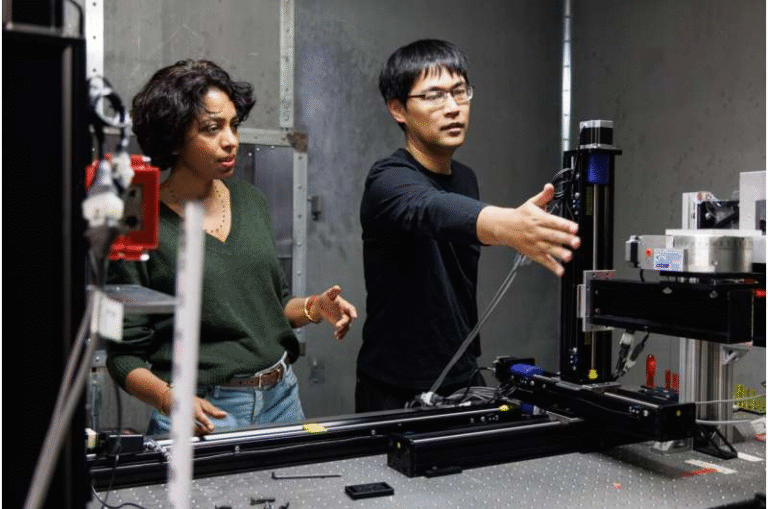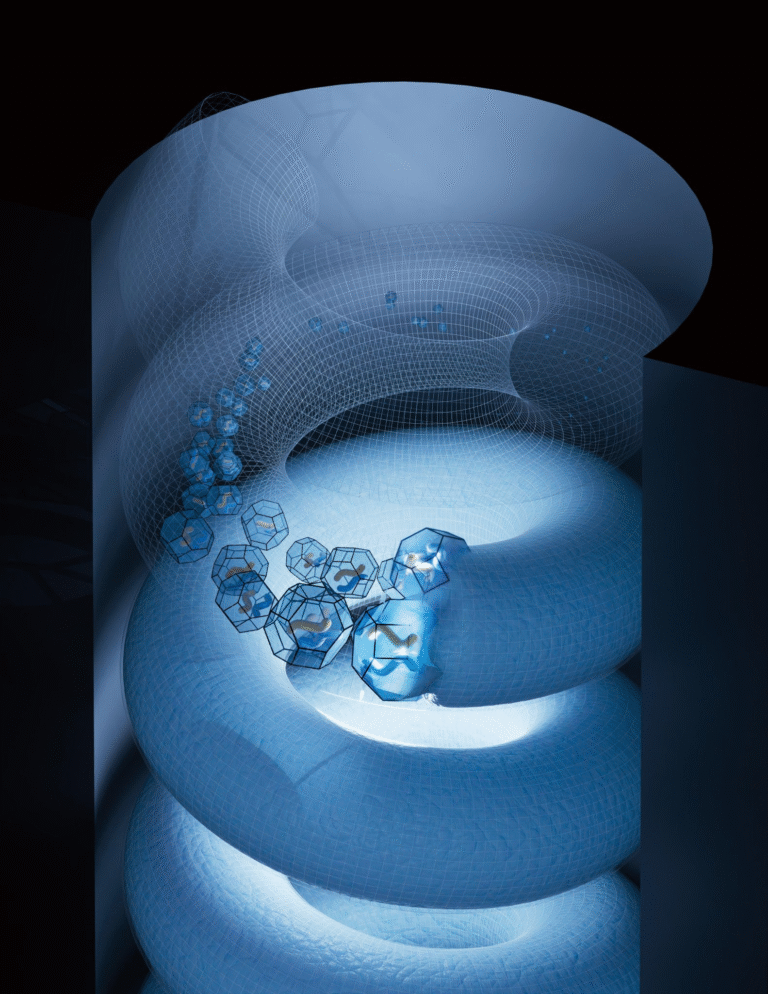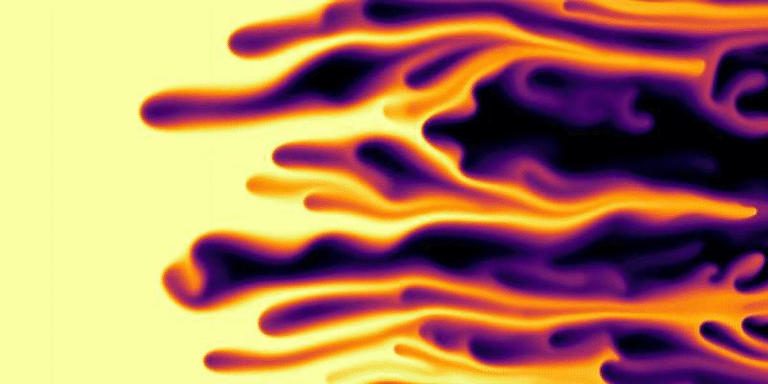Warwick Researcher Revives a Century-Old Equation to Better Predict How Dangerous Air Pollutants Move

A new study from the University of Warwick has breathed life into a 100-year-old equation, making it more accurate and versatile in predicting how irregularly shaped airborne particles move through the air. This development could transform the way scientists model air pollution, disease transmission, and even climate dynamics.
Every day, we unknowingly inhale millions of microscopic particles — soot from car exhausts, dust, pollen, microplastics, and even engineered nanoparticles. Some of these particles are so tiny that they can slip deep into the lungs, enter the bloodstream, and contribute to diseases such as heart disease, stroke, and cancer. Understanding how these particles travel through the air is crucial for both public health and environmental safety.
Yet, most existing mathematical models treat these particles as if they were perfect spheres. It’s a simplification that makes the equations easier to handle but far less accurate. Real-world particles, however, come in countless irregular shapes — twisted fibers, flat flakes, jagged dust grains, and complex aggregates. Predicting how such particles behave in the air has been a persistent challenge for scientists.
That’s where Professor Duncan Lockerby, from the School of Engineering at the University of Warwick, steps in. His latest research, published in the Journal of Fluid Mechanics in October 2025, introduces a new and simple mathematical method to predict the motion of irregular particles of any shape. By revisiting and reworking an old but powerful formula, Lockerby has provided the first general predictive framework for non-spherical particles moving in air.
Reclaiming a Forgotten Idea
The key to this breakthrough lies in revisiting one of the cornerstones of aerosol science — the Cunningham correction factor. Originally developed in 1910, this factor helps adjust calculations for how small particles experience drag (air resistance) differently from what classical fluid mechanics predicts.
In the 1920s, Robert Millikan, who later won the Nobel Prize for his oil drop experiment, refined Cunningham’s formula to make it fit experimental data better. However, Millikan’s refinement unintentionally made the equation too restrictive — it only worked well for spherical particles.
For over a century, that limitation remained in place. Scientists were forced to use approximate or computationally heavy models to study non-spherical particles. Lockerby’s work revives Cunningham’s original spirit — simple yet powerful — and transforms it into a more universal and elegant mathematical form.
How the New Model Works
Lockerby’s new approach introduces what he calls a “correction tensor”. In simple terms, it’s a mathematical framework that can handle drag and resistance forces acting on particles of any arbitrary shape, whether they’re spheres, disks, rods, or complex irregular structures.
The correction tensor builds on the idea that a moving particle interacts with air differently depending on its shape, size, and orientation. Instead of relying on empirical adjustments or time-consuming simulations, this tensor captures those variations directly within the equations.
The model doesn’t require any fitting parameters — meaning it’s based entirely on physics rather than experimental tuning. It successfully bridges the gap between two well-known regimes in fluid mechanics:
- Continuum regime, where air behaves like a smooth fluid (large particles).
- Free-molecular regime, where air behaves more like a collection of individual molecules (very small particles).
Most real-world particles, especially nanoparticles, fall somewhere in between these two extremes — the so-called transition regime. Lockerby’s model provides a consistent mathematical bridge across all these regimes.
In his paper, Lockerby validates the new method by comparing it with established data and simulations for spheres, spheroids (elongated shapes), and even thin circular disks. The results closely match existing theoretical predictions, showing that the new approach maintains both simplicity and accuracy.
Why This Discovery Matters
This isn’t just a mathematical curiosity — it has wide-ranging implications across multiple fields. With this new model, scientists can better predict how pollutants spread through cities, how wildfire smoke travels, or how volcanic ash clouds move through the atmosphere.
In public health, understanding how irregularly shaped nanoparticles behave could help determine where and how pollutants deposit in the human respiratory system, influencing disease risk assessments. It could also assist in studying virus-laden aerosols, improving models of disease transmission.
In engineering and nanotechnology, this approach could make it easier to design systems involving particle motion — from drug delivery aerosols to industrial nanoparticle production.
The Warwick research team has even taken practical steps to expand on this work. The School of Engineering has invested in a state-of-the-art aerosol generation facility that allows researchers to create and study various real-world non-spherical particles under controlled conditions. This will help verify the model’s predictions experimentally and refine it further.
A Step Forward in Aerosol Science
Lockerby’s contribution represents a rare achievement — taking a century-old model and improving it in a way that preserves its simplicity while massively expanding its usefulness. It’s a bridge between the elegance of classical physics and the complexity of modern environmental challenges.
The fact that the model can predict drag and movement without needing costly simulations is particularly valuable. Environmental and atmospheric scientists often rely on computational fluid dynamics (CFD) models, which are expensive and time-consuming. A general analytical model like Lockerby’s provides a powerful alternative for many applications where speed and simplicity are essential.
Lockerby describes his work as a way of “reclaiming the original spirit” of Cunningham’s idea — a universal, physics-based correction that can work for all kinds of particles, not just idealized ones. By extending that concept into a full tensor framework, he has opened the door to a much deeper understanding of how particles interact with air at microscopic scales.
Broader Context: Why Shape Matters in Airborne Particles
When it comes to the way particles behave in air, shape changes everything. A perfectly round particle experiences drag evenly from all directions, but an elongated or flat particle can tumble, rotate, or align with airflow, drastically changing its path.
Irregularly shaped particles are also more likely to adhere to surfaces, remain airborne for longer, and penetrate deeper into the lungs. These characteristics make them more hazardous — especially in polluted urban environments.
Nanoparticles, in particular, are a growing concern. These are particles smaller than 100 nanometers, often produced by combustion engines, manufacturing processes, or chemical reactions in the atmosphere. Because of their size and irregular structure, they can enter cells and interact with biological tissues, causing inflammation or other health effects.
Accurately predicting how these nanoparticles move, settle, or disperse is essential for both air quality management and public health policy. The new correction tensor gives scientists a tool to do that with far greater precision than before.
Looking Ahead
This research opens up new possibilities for the scientific community. The next steps involve testing the correction tensor across a wider range of shapes and particle types and integrating it into large-scale environmental models.
As technology advances, combining this theoretical framework with high-speed aerosol imaging and machine learning could further enhance our understanding of how particles behave in complex environments.
For now, Lockerby’s contribution stands as an impressive example of how re-examining old science can yield new insights. Sometimes, the path forward begins by looking back — and finding a better way to carry timeless ideas into the modern world.
Research Paper Reference:
A correction tensor for approximating drag on slow-moving particles of arbitrary shape and Knudsen number, Journal of Fluid Mechanics (2025)





